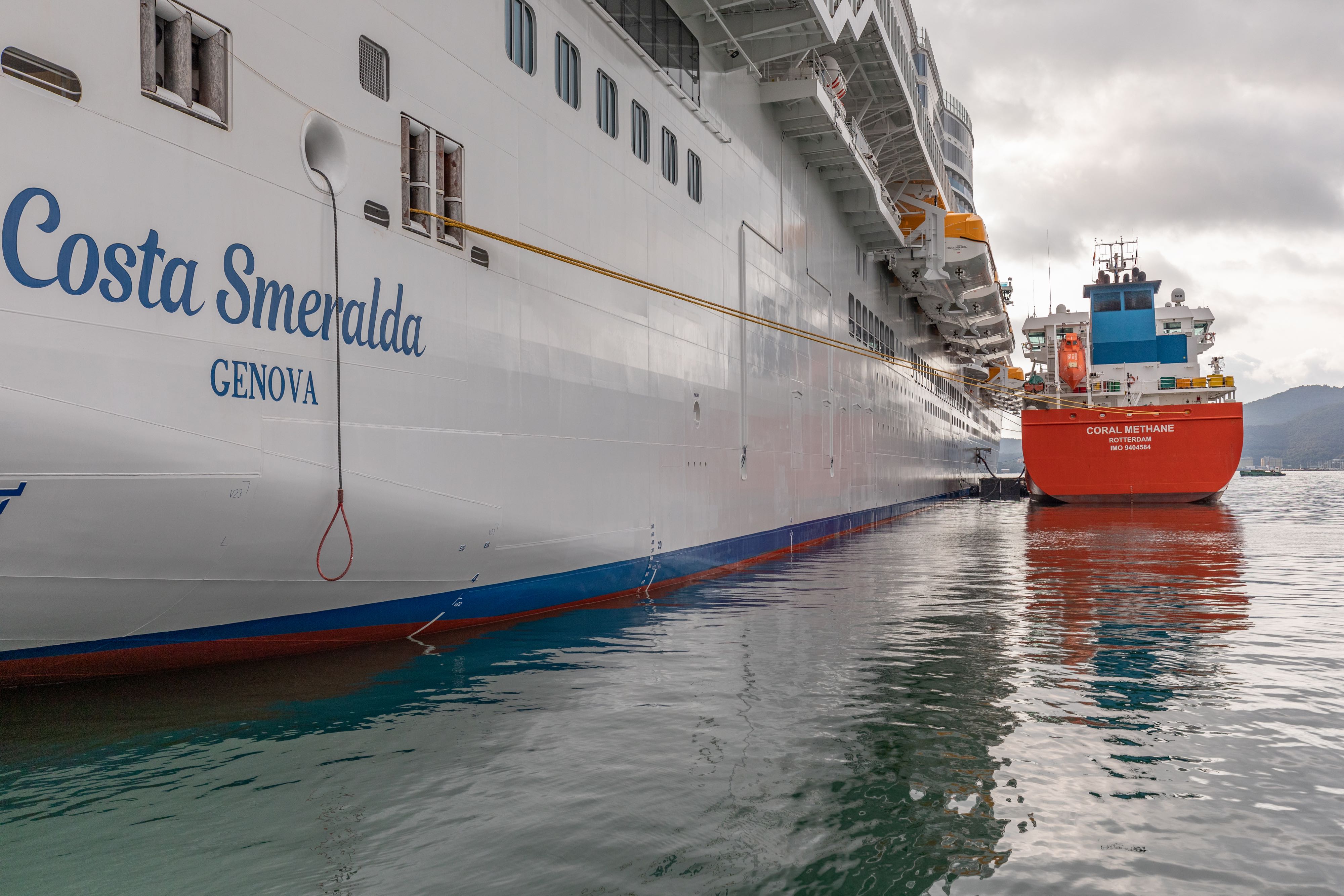
Sunday 25 October 2020 is a day that will remain in the history of the development of direct uses of LNG in our country. In fact, in the port of La Spezia in Liguria, the first supply of liquid methane to a large tanker vessel took place successfully. The ship supplied was the Costa Smeralda, flagship of the Costa Crociere fleet, the largest in the world using LNG.
It was supplied by Coral Methane, owned by Dutch shipowner Anthony Veder, with a capacity of 7,500 cubic metres of LNG, leased by Shell under a long-term contract. In turn, the US Carnival Group, of which Costa Crociere is part, has a 10-year contract with Shell for the global supply of LNG for all its ships using it.
The capacity of the Costa Smeralda's tanks is 3,600 cubic metres, enough for two or more cruises a week depending on the length of the routes. After the long period of "disarmament" due to the first wave of the pandemic, for a couple of weeks the fleet's flagship has resumed cruises, but only in Italy, starting from Savona and touching Cagliari, Messina, Naples, Civitavecchia, La Spezia and Savona for now. Previously the cruises touched Marseille, Barcelona, where LNG supplies were made, the Balearic Islands, Civitavecchia and Savona.
For the Coral Methane, Sunday was the fiftieth supply of Carnival Group ships, but one of the first supplies to the regasification plant in Barcelona. Coral Methane is usually supplied in Rotterdam. Loadings in the Spanish city may prefigure a more continuous role for Coral in the Mediterranean, where in the coming months the Higas coastal depot on Avenir and other cruise ships and ferries will have to be resupplied in addition to the fortnightly refuelling of Shell's Gibraltar power station.
As described in the press release of the Harbour Master's Office of La Spezia, the operations started at 10.58 am and ended at 4.13 pm and, for the whole time, navigation has been forbidden for a radius of 100 m. from the docking point of the hoses (flexible pipelines where the LNG passes at minus 160 degrees), in order not to create wave motion. In the meantime, in other marine areas of the world, ship-to-ship operations are also spreading to the high seas.

The Coral approached the West Garibaldi pier where the Costa Smeralda was docked, turned around to have the bow towards the sea and started docking the two hulls, spaced out by two special pontoons, not yet available in Italy, coming from Marseille. The Costa Smeralda uses the special cryogenic pumps developed by Italian Vanzetti Engineering.
The actual refuelling, which lasted about four hours, was 2,400 cubic metres with a maximum rate of about 630 cubic metres per hour. The Costa Smeralda, in case of need, can also use marine diesel fuel, but it is a pride of the shipowner to use around 100% LNG since its ships are operational.
For ship-to-ship refuelling in the port of La Spezia, the Harbour Master's Office in recent months, in agreement with the Liguria Maritime Directorate, has set up a working group that has led to the drafting of a draft regulation that will soon be formalised and published in the light of this first refuelling operation, which should not be considered experimental because it is based on the standard methods prescribed by the new regulation.
In fact, the operation has been regulated by the Harbour Office with the authorization n. 17 of 21.10.2020 in which all the safety requirements already identified in the draft regulation have been included in order to protect the environment, the safety of navigation, the protection of maritime workers and fire prevention.
The authorisation act also complies with the overall risk assessment drawn up by a first recognised certification institute and validated by a second one, obviously different from the first one. This assessment has taken into account all possible scenarios that may occur with the use of LNG in the ship-to-ship and ship-terminal interface. On the basis of this study, risk factors have been identified which, with the requirements adopted, have been brought to values very close to "zero".
The refuelling was coordinated and controlled by the Harbour Master's Office itself, with the presence on board the cruise unit of an Officer of the Navigation Safety Service, the port chemist and the Bureau Veritas institute technician who validated the risk assessment.
Source: ConferenzaGNL - press release CdP La Spezia
 EN
EN  it
it

